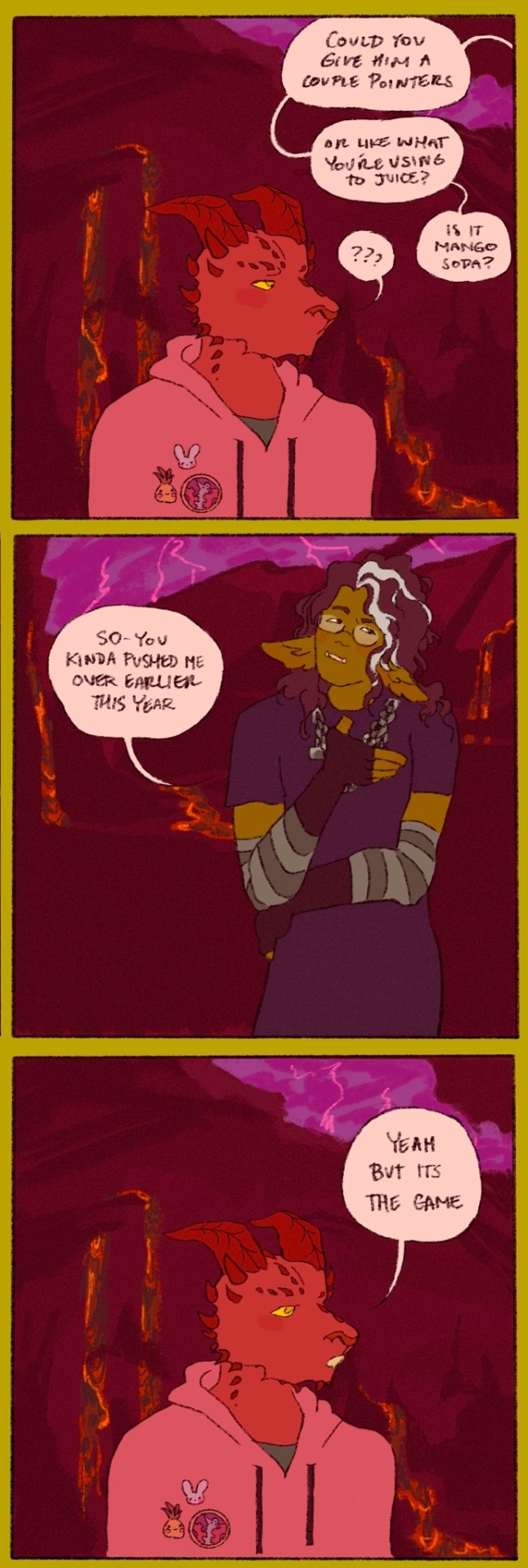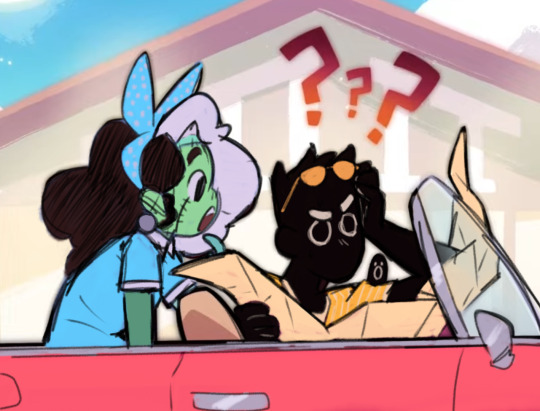He/Him so much of my life makes sense now
Last active 4 hours ago
Don't wanna be here? Send us removal request.
Text
Sparking Chemistry Between Characters #1
⇢ Emotional Timing ( When One Opens Up and the Other Isn’t Ready, Yet)
There’s something so devastatingly real about when characters miss each other, not physically, but emotionally. One’s finally ready to be honest, to be seen… and the other? Still hiding. Still pretending. That emotional dissonance creates a whole different kind of electricity: one rooted in vulnerability, silence, and the ache of almost.
“I trust you,” she said, voice low, eyes steady. He looked at her, and for a second, he almost said it back. But then his smile cracked, soft and sad, and he looked away like the words were burning holes in his throat.
This isn’t the moment they fall into each other’s arms. This is the moment they could have. And those moments still haunt.
Use this when:
You want slow burn that hurts a little
Your characters are stubborn, scared, or emotionally constipated (bless them)
The closeness builds from not-quite-connecting, until one of them finally breaks
⇢ Silent Support ( When They Don’t Say It, But They Show It)
Sometimes the most romantic thing a character can do is just… be there. No speeches. No dramatic gestures. Just showing up, quiet, consistent, unwavering. The kind of person who notices when your laugh sounds tired.
He didn’t say anything when he found her curled up on the kitchen floor. He just sat next to her, their shoulders barely touching, and slid his hoodie off without a word. A minute later, she was wearing it. Five minutes later, she was breathing again.
This isn’t about grand declarations. It’s about the kind of love that doesn’t demand to be acknowledged. The kind that waits. That steadies. That speaks fluent silence.
Use this when:
You want to show love without “I love you”
You’re building intimacy through actions, not words
Your characters aren’t the touchy-feely, talk-it-out types
⇢ Emotional Whiplash (When Conflict Turns Intimate Too Fast)
This is the classic “We were fighting five seconds ago and now I want to kiss you” moment. Because nothing stirs up feelings like frustration mixed with closeness. When characters clash, especially if there’s emotional history or denial involved, it creates heat. They’re already fired up. Already in each other’s space. Now throw in a little vulnerability and BAM, you’ve got magnetic chaos.
“Why do you care what I do?” she snapped, stepping closer. “Because I...” He bit the word back, jaw tight. His fists clenched at his sides. She stared, breath caught in her throat. “Because I do,” he said finally, quieter this time. “More than I should.”
Enemies to lovers. Friends to what even are we. That line-blurring, heart-pounding tension where the air is thick and the truth almost slips out, that’s where this trope lives (I Love It).
Use this when:
You want chaos, angst, and chemistry all at once
Your characters are in denial and one good argument away from kissing
You want something to break open and then immediately regret it
2K notes
·
View notes
Text
Infinity Nikki- game
A quick reminder you can exchange extra pieces (dups) you have for mats here!!



Infinity Nikki | Recycling
In Friends, Dada will notify you that Yelubo has arrived in town. Talk to Yelubo to start recycling. ♻️
There are five types of Glitter Bubbles, used to glow up max-level outfits🔻
Glitter Bubbles: Elegant
Glitter Bubbles: Sexy
Glitter Bubbles: Sweet
Glitter Bubbles: Fresh
Glitter Bubbles: Cool
Only outfits with more than one duplicate will appear here, so feel free to click Select All to recycle them!





492 notes
·
View notes
Photo
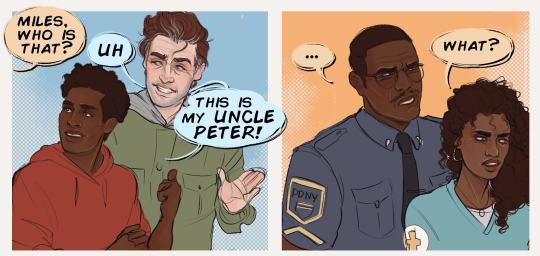
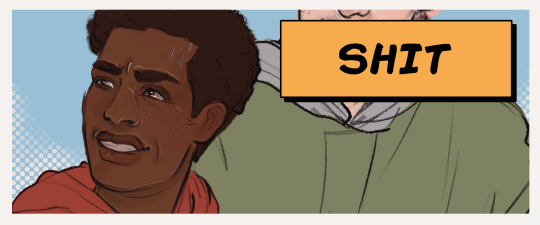
miles “who’s morales” morales’s biggest weakness is the cover story
407K notes
·
View notes
Text



Layouts for Avengers tower and Compound if you guys are having trouble labeling rooms or where to visualize whole writing or reading fanfics
150 notes
·
View notes
Note
Any advice for actuly getting the motivation up to write?
Firing Up Writing Motivation
Hey there, thanks for the question ( ˶ˆᗜˆ˵ ) Here are some things that I have tried:
Reading books, esp in the genre you're writing.
Playing around with character/setting aesthetics to warm up before you start punching out the words
Getting a writing partner to keep each other accountable.
Writing at a specific place & time. I know this is more difficult than said, but making a habit of writing is important. As Stephen King said, you need to tell your Muse when and where for them to come find you.
Declaring to friends/family your writing goals.
Taking a writing course in university/college. When my GPA is on the stake, I tend to get more motivated, haha...
Switching between multiple stories. This can backfire, but I tend to do better when I'm able to "run away" to another story when I get utterly stuck on one.
Some other suggestions:
Check whether you have made enough notes to actually sit down and write. I lean more towards a planner than a panster - if I don't have a satisfying ending in mind, I find it difficult to push through the middle.
Watching writing/reading vlogs. Again, beware of sitting hours on YouTube, but watching others reaching their writing goals motivates me to do better.
Taking part in short, simple writing contests. I'm a Wattpad girlie, and sometimes I find small writing competition hosted by the Ambassador profiles just to take a little breather.
and lastly... just brute-forcing yourself in front of your monitor, haha.
─── ・ 。゚☆: *.☽ .* . ───
💎If you like my blog, buy me a coffee☕ and find me on instagram! Also, join my Tumblr writing community for some more fun.
💎Before you ask, check out my masterpost part 1 and part 2
241 notes
·
View notes
Text
Writing Notes: Compelling Characters

Characters & Goals
“Every character should want something, even if it is only a glass of water.” –Kurt Vonnegut
Characters should almost always have clear goals, even if these goals are not immediately made obvious to the reader.
Without goals, characters lack motivation—that is, they have little reason to do anything interesting.
For this reason, many writers connect the main character's goals to the main conflict in the story. This generally means that the main obstacle to those goals plays a key role in the plot as well (for instance, in the form of a villain).
Often, the main character is most interesting and when confronting his own shortcomings in pursuit of his goals.
There are a few ways to construct this character-plot connection:
CHARACTER-FIRST APPROACH
Constructs a story’s plot for a character that already exists.
It asks a writer to build a character that they find interesting and then assemble the plot around them.
Example: A character who is struggling to overcome a phobia might, as a plot element, come into contact with the thing she fears. Success in this instance would mean that she doesn’t let the fear overcome her.
PLOT-FIRST APPROACH
Starts by defining the major conflicts the writer wants to include in a piece of fiction and then builds a character who will be motivated by those conflicts.
Example: A writer could decide to explore the effect of a catastrophic storm on a city before writing a main character. A character that would feel motivated by this conflict would be one with a connection to the city or to someone living in the city. Therefore, the son of someone who went missing in the storm would likely be a good focal character for this story.
Small Goals & Big Goals
Though it’s important for characters to have at least one big goal, it can be boring for the reader if a character is totally preoccupied with a single motivation.
Strong characters generally have two or more goals of varying sizes that they might confront separately or at the same time.
The reader excitedly anticipates your character's success or failure in achieving their goals.
Believability
Another factor that can contribute to a successful character is an element called “verisimilitude,” also called “believability.”
When writers talk about believability, they talk about whether the constituent parts of a character make sense and feel cohesive.
Example: We might expect a character who gets paid minimum wage to struggle to pay her bills, so if we see her driving an expensive car or spending several hundred dollars on a meal at a fancy restaurant, we would question these details.
There are, of course, stories in which these situations could exist, but the reader would need to know what allowed them to happen (inheritance from a late relative, perhaps, or an irresponsible approach to personal debt).
Suspension of Disbelief
Stories that take place outside of a realistic modern setting will generally require some extra work on the part of the writer to make them believable.
This is because of an idea called “suspension of disbelief.”
This refers to the tendency of readers to challenge details of a story that seem out-of-place, but not to question those details if they are presented with enough contextual justification.
Example: A story contains people who can fly with human-size wings. The reader would need to learn early on that this is a normal event that occurs in the story world. A reader who unexpectedly encounters flying humans three-fourths of the way into a short story could easily be baffled by this development, and might also consider it a cheap cop-out if it's used to resolve a plot conflict.
Adding Physical Detail
In addition to planning your characters thoughtfully, you must also sketch them coherently on the page.
Careful selection of physical and environmental details will make some of your character’s traits visible to your reader without you having to tell them outright what you mean. Examples:
A character who is disorganized might have wrinkled clothing or might consistently arrive late to appointments.
An introverted character might bring a book or notebook everywhere they go and might also stay out of crowded spaces (or feel uncomfortable in those spaces).
Symbolic Meanings
Be aware of the other meanings that a detail can bring into a piece.
A physical detail, especially one that appears multiple times within a work, might also develop symbolic meanings in addition to its literal meaning.
Writing Exercise
In a short vignette, and using only physical details (e.g., characters' clothing, appearance, or body language), make it clear to a reader that a character is experiencing one of the following conditions: worry, hunger, grief, joy, confusion, lack of sleep, anxiety, homesickness.
The word you chose should not appear in your vignette, nor should any synonyms.
Adding Personality
Broadly, “personality” refers to the collection of beliefs, thought patterns, and other mental qualities that dictate a character’s actions.
A personality trait could be the character’s bubbly disposition, their self-deprecating humor, or the fact that they’re always nervous.
When constructing a character, it’s important to think about how she would react in a number of situations.
Here are some questions to help you discover your character’s personality traits:
Is he fond of attention, or does he avoid it?
Is she curious to learn more about a topic/location/person, or does she keep to herself?
How big of a role does fear play in his day-to-day activities?
How does this character react if things don’t go the way she wants them to?
Does he think that he’s more intelligent/less intelligent than others around him?
Does she think she’s average? How would she define “average?”
How does he feel about making decisions?
Does she make decisions quickly or slowly?
Does he tend to regret decisions they’ve made?
It’s helpful to connect these traits to elements from the character’s life or past.
Example: A character who grew up with a controlling parent might have difficulty making decisions once they start living on their own.
Personality traits might also overlap with physical traits.
Example: Talking too loudly or too softly or interrupting others.
It’s also important to make sure that your characters aren’t good at everything they come across.
Doing so will reduce your story’s believability because—let’s face it—no one is good at everything.
To this end, you should allow your characters to fail at something, whether that something is huge or inconsequential.
Writing Exercise
In a short vignette, deliver some news to your character.
The news can be good or bad.
It can affect just the character, or the entire world population, or any number of people in between.
How does this character react?
Who do they tell, if anyone?
How do they interact with the space they’re in (e.g. punch a wall, hug a stranger)?
Try this exercise several times with the same character but different contexts (e.g., the character receiving the news alone versus receiving it in a public place) to see how they react under different circumstances.
CAUTION: Using Fictionalized Versions of Real People
It’s common for writers to borrow details from real life—the shape of a stranger’s chin, a classmate’s clicking of their pen during a quiet exam, or the restaurant server’s shrill laugh, to give just a few examples—but a writer should be wary of recreating an entire person on the page.
There are legal reasons not to do this, of course, but there is also the danger that a story filled with too many real-life people and events will be flat and boring.
Fiction should generally be a healthy mix of the ordinary and extraordinary.
If the mix is skewed too far in one direction, the reader can find the piece too unbelievable or too boring.
Source ⚜ More: Writing Notes & References ⚜ Writing Worksheet: Conflict Lists: 170 Character Quirks ⚜ +600 Personality Traits ⚜ 100 Sensory Words
270 notes
·
View notes
Text
:-“What are we?” Prompts-:
Cw: suggestive
By @me-writes-prompts
“Whatever you want us to be.”
“Good old pals who don’t want to admit their feelings for each other. That’s what we are.”
“Enemies. I mean, what else could we be?”
“Young and dumb.”
“Hmmm. You tell me.”
“Not this question again.”
“Coffee lovers.” “Lovers?”
“Work colleagues. What else?”
“Interesting. What exactly are we?”
“Childhood best friends.” “I mean, yes. But, what about something more?”
“Rivals, is my guess.”
“Two awkward nerds who can’t communicate about their feelings?”
“Whatever the fuck they call people that are not-yet-lovers-but-still-kiss-and-have-sex-sometimes. Friends with benefits, is it?”
“I mean…we’re friends, right?”
“Jeez, the last time you asked this question, we ended up arguing about it for hours.”
“Nah uh, we’re not going there today.”
“I know you’re not asking this question after we’ve been married for 7 years. Goodness.”
“Ummm, I don’t know. What do you think we are?”
“Idiots in love.”
“We are confused. That’s what we are right now, and that’s okay.”
“No, the right question is “what could we be?”
“We’re gay.”
2K notes
·
View notes
Text
Creative misfortunes for characters
Identity Crisis: Have your character lose their memory, forcing them to rediscover their true self and past.
Betrayal by a Loved One: A close friend or family member betrays the character's trust, leading to emotional turmoil and inner conflict.
Physical Transformation: Give your character a physical ailment or transformation that they must come to terms with, such as sudden blindness, a debilitating illness, or turning into a different species.
Unrequited Love: Make your character fall deeply in love with someone who doesn't reciprocate their feelings, causing heartache and a quest for self-discovery.
Financial Ruin: Strip your character of their wealth and privilege, forcing them to adapt to a life of poverty and face the harsh realities of the world.
False Accusation: Have your character falsely accused of a crime they didn't commit, leading to a desperate quest to clear their name.
Natural Disaster: Place your character in the path of a devastating natural disaster, such as a hurricane, earthquake, or tsunami, and force them to survive and rebuild.
Loss of a Sense: Take away one of your character's senses (e.g., sight, hearing, taste) and explore how they adapt and cope with this profound change.
Forced Isolation: Trap your character in a remote location, like a deserted island, and make them confront their inner demons while struggling to survive.
Haunted Past: Reveal a dark secret from your character's past that comes back to haunt them, threatening their relationships and well-being.
Time Travel Consequences: Send your character back in time, but make them inadvertently change a crucial event in history, leading to unintended consequences in the present.
Psychological Breakdown: Push your character to the brink of a mental breakdown, exploring the complexities of their psyche and their journey towards recovery.
Unwanted Prophecy: Have your character be the subject of a prophecy they want no part of, as it places them in grave danger or disrupts their life.
Loss of a Loved One: Kill off a beloved character or make your protagonist witness the death of someone close to them, igniting a quest for revenge or justice.
Incurable Curse or Disease: Curse your character with an incurable ailment or supernatural curse, and follow their journey to find a cure or accept their fate.
Sudden Disappearance: Make a character disappear mysteriously, leaving the others to search for them and uncover the truth.
Betrayal of Morals: Force your character into a situation where they must compromise their ethical values for a greater cause, leading to moral dilemmas and internal conflict.
Loss of a Precious Object: Have your character lose a cherished possession or artifact that holds sentimental or magical significance, setting them on a quest to recover it.
Political Intrigue: Place your character in a position of power or influence, then subject them to political intrigue, manipulation, and power struggles.
Existential Crisis: Make your character question the meaning of life, their purpose, and their place in the universe, leading to a philosophical journey of self-discovery.
Remember that misfortunes should serve a purpose in your story, driving character growth, plot development, and thematic exploration.

3K notes
·
View notes
Text
What to give a fuck about,while writing your first draft!
I`ve posted a list about things you don´t need to give a fuck about while writing your first draft. Here are things you NEED TO CARE about! (in my opinion)
Your Authentic Voice: Don't let the fear of judgment or comparison stifle your unique voice. I know it´s hard,but try to write from your heart, and don't worry about perfection in the first draft. Let your authenticity shine through your words.
Your Story, Your Way: It's your narrative, your world, and your characters. Don't let external expectations or trends dictate how your story should unfold. Write the story you want to tell.
Progress Over Perfection: Your first draft is not the final product; it's the raw material for your masterpiece. Give a fuck about making progress, not achieving perfection. Embrace imperfections and understand that editing comes later.
Consistency and Routine: Discipline matters. Make a commitment to your writing routine and stick to it.
Feedback and Growth: While it's essential to protect your creative space during the first draft, be open to constructive feedback later on. Giving a f*ck about growth means you're willing to learn from others and improve your work.
Self-Compassion: Mistakes, writer's block, and self-doubt are all part of the process. Give a f*ck about being kind to yourself. Don't beat yourself up if the words don't flow perfectly every time. Keep pushing forward and remember that writing is a journey.
Remember, the first draft is your canvas, your playground. Don't bog yourself down with unnecessary worries.

5K notes
·
View notes
Text
Creating Emotionally Devastating Scenes.
Crafting a scene that earns the total sympathy of your readers can be challenging, but it's not impossible. Most emotionally devastating scenes fail at two things, but when these are done right, the results can be powerful.
⚪ The Important Concepts for Writing an Emotionally Devastating Scene
1. The Build-Up,
2. Breaking the Dam.
Before I explain these concepts, let me share a case study.
⚫ Case Study
I wrote a story about a young orphan named Jackie and her younger brother. Their village was burned down, leaving them as the only survivors.
For the next few chapters, readers followed their painful journey and their struggle to survive. The younger brother had a heart problem, and Jackie vowed to become a cardiologist to save him.
She was very ambitious about it, but at the time, it was very ironic. Later in the story, when they encountered a tragic living condition with a family, the brother died while telling his sister how much he missed their parents.
When her brother was fighting for his life, she was sent out of the room, only to be let in again to see his cold, lifeless body.
⚪ Explanation of Concepts
1. The Build-Up
The build-up is extremely important when you aim to convey strong emotions. Here's a secret: if you plan for a scene with strong emotions, start leaving breadcrumbs from the very beginning of the story.
Take the previous case study. I carefully built up their journey so people could easily relate and feel the pain of the older sister during her brother's sudden death.
You need to give the situation enough reason to feel utterly hopeless and devastating. Gradually cultivate the tension until it's ready to let loose.
⚫ Understanding the Use of Breadcrumbs.
Breadcrumbs in stories ensure you utilize the time you have to build up certain emotions around your characters.
At the beginning of my story, Jackie’s fate was already pitiable, but she survived every hurdle. This gave the readers enough to feel for her while still leaning away from the outcome. When I built enough, I introduced her brother's sudden death.
Hence, leave your breadcrumbs while leaning away from the outcome.
⚪ How to Properly Leave Breadcrumbs
When building up your story, consider these elements:
☞ Character Relatability: The characters need to be realistic to draw readers into the story. This helps readers invest themselves in your story.
☞ Realistic Emotional Pain: Just as characters need to be relatable, their emotions need to be realistic and not appear forced.
☞ Create a Strong Emotional Attachment: Give them something they care about or that has the power to ruin their lives in any way. It could be something that makes them happy or something their happiness relies on. When it's time, snatch it away without remorse.
☞ Have a Backstage Struggle: This struggle keeps readers occupied, so they won't see the outcome coming. For example, Jackie’s constant struggle to find food and shelter keeps readers engaged while the impending tragedy looms in the background.
☞ Attach Believable Elements: For a realistic character, emotion, and struggle, attach believable elements. It could be death, ailments, sickness, disorder, disappointment, failure, etc.
Now that we've covered the build-up, let's move on to the next crucial part.
2. Breaking the Dam
This is when you make your readers feel the strong emotions alongside your characters. All the tension you’ve been building up is released, making all emotions come into play.
☞ Break Your Strong Attachment: Cut off your strong attachment from your character when they least expect it or at a point when they couldn't use more struggles (i.e when they are helpless).
This will not only evoke readers’ emotions but also pique their curiosity as they wonder how the character will survive the situation.
☞ Description of Sensory Details to Invoke Emotions: The advice of "show, don't tell" will be really helpful here. It's crucial to ensure that the final execution matches the build-up.
A well-crafted build-up can fall flat if the emotional release isn't handled effectively. To avoid this, blend the climax seamlessly into the narrative, making it feel natural and impactful.
Reblog to save for reference! 💜
2K notes
·
View notes
Text
my 10 holy grail pieces of writing advice for beginners
from an indie author who's published 4 books and written 20+, as well as 400k in fanfiction (who is also a professional beta reader who encounters the same issues in my clients' books over and over)
show don't tell is every bit as important as they say it is, no matter how sick you are of hearing about it. "the floor shifted beneath her feet" hits harder than "she felt sick with shock."
no head hopping. if you want to change pov mid scene, put a scene break. you can change it multiple times in the same scene! just put a break so your readers know you've changed pov.
if you have to infodump, do it through dialogue instead of exposition. your reader will feel like they're learning alongside the character, and it will flow naturally into your story.
never open your book with an exposition dump. instead, your opening scene should drop into the heart of the action with little to no context. raise questions to the reader and sprinkle in the answers bit by bit. let your reader discover the context slowly instead of holding their hand from the start. trust your reader; donn't overexplain the details. this is how you create a perfect hook.
every chapter should end on a cliffhanger. doesn't have to be major, can be as simple as ending a chapter mid conversation and picking it up immediately on the next one. tease your reader and make them need to turn the page.
every scene should subvert the character's expectations, as big as a plot twist or as small as a conversation having a surprising outcome. scenes that meet the character's expectations, such as a boring supply run, should be summarized.
arrive late and leave early to every scene. if you're character's at a party, open with them mid conversation instead of describing how they got dressed, left their house, arrived at the party, (because those things don't subvert their expectations). and when you're done with the reason for the scene is there, i.e. an important conversation, end it. once you've shown what you needed to show, get out, instead of describing your character commuting home (because it doesn't subvert expectations!)
epithets are the devil. "the blond man smiled--" you've lost me. use their name. use it often. don't be afraid of it. the reader won't get tired of it. it will serve you far better than epithets, especially if you have two people of the same pronouns interacting.
your character should always be working towards a goal, internal or external (i.e learning to love themself/killing the villain.) try to establish that goal as soon as possible in the reader's mind. the goal can change, the goal can evolve. as long as the reader knows the character isn't floating aimlessly through the world around them with no agency and no desire. that gets boring fast.
plan scenes that you know you'll have fun writing, instead of scenes that might seem cool in your head but you know you'll loathe every second of. besides the fact that your top priority in writing should be writing for only yourself and having fun, if you're just dragging through a scene you really hate, the scene will suffer for it, and readers can tell. the scenes i get the most praise on are always the scenes i had the most fun writing. an ideal outline shouldn't have parts that make you groan to look at. you'll thank yourself later.
happy writing :)
8K notes
·
View notes
Text
Deities and their Tarot Cards (Long Post)
I’ve heard of Pagans being contacted by their gods via certain Tarot Cards, so I wanted to do a deep dive and outline which Cards are associated with which Gods. Hopefully this can help you tell which God is reaching out to you :)

Major Arcana
The Fool: Pan, Zeus, Dionysus, Loki, Hermes
The Magician: Hermes, Thoth, Odin,
The High Priestess: Hekate, Selene, Isis, Artemis, Freya, Ganesha, Tsukiyomi
The Empress: Aphrodite, Hera, Freya, Frigg, Isis, Hathor, Durga, Astarte, Demeter, Ishtar The Emperor: Zeus, Lugh, Odin, Horus, Ares, Osiris, Ra
The Hierophant: Osiris, Athena, Thoth, Seshat, Ogma, Horus, Apollo, Hermes, Odin, Brigid, Saraswati, Ganesha
The Lovers: Aengus Og, Aphrodite, Frigg, Rhea, Gaia, Demeter, Inanna, Ishtar, Parvati, Hathor, Isis, Brigid, Freya, Osiris, Cernunnos, Freyr, Dionysus, Pan The Chariot: Thor, The Morrigan, Nike, Athena, Astarte, Inanna, Ishtar, Anat, Freya, Bast, Durga, Odin, Horus, Sobek, Ares, Apollo, Set, Bellona
Justice: Lugh, Aengus Og, The Morrigan, Nemesis, Inanna, Themis, Ma’at, Nike, Athena, Zeus, Forseti
Strength: Thor, Hestia, Athena, Sekhmet, Bast, Macha, Brigid, Danu, Isis, The Virgin Mary, Bast, Sekhmet, The Dagda, Lugh
The Hermit: Odin, Isis, Hestia, Persephone, Hades, Hekate, Cerridwen, Brigid, The Muses, Saraswati, Hermes, Ogma, Odin
Wheel of Fortune: Zeus, Hathor, Isis, The Dagda, The Moirai, Maat, Arianhrod
The Hanged Man: Odin, Artemis, Osiris, Persephone, Inanna, Ishtar, Buddha, Jesus
Death: Persephone, Inanna, Ereshkigal, Isis, Nephtys, Izanami, Hel, Freya, Hades, Seth, Anubis, Osiris, Manannan Mac Lir, Odin, Thanatos, The Morrigan, Morana
Temperance: Artemis, Isis, Nepthys, Iris, Ma’at, Hebe, Apollo, Vishnu
The Devil: Dionysus, Pan, Set, Lilith, The Morrigan, Banshees, Baba Yaga, Lucifer, Baphomet, Satan, Veles, The Horned God
The Tower: Kali, Ares, Pele, Sekhmet, Hel, The Morrigan, Sedna, Anat, Ceres, Chernobog, Shiva
The Star: Aphrodite, Thoth, Hermes, Ishtar, Astrea, Isis, Arianhrod, The Virgin Mary, Inanna, Nuit, Isis, Nodens, Zorya
The Moon: Artemis, Hekate, Rhiannon, Cerridwen, Selene, Isis, Phoebe, Mani, Thoth, Arianhrod, Tsukiyomi, Chang-e
The Sun: Lugh, Apollo, Kupala, Helios, Brigid, Sol, Artemis, Athena, Aine, Bast, Sekhmet, Freyr, Horus, Aten, Ra, Agni
Judgement: Persephone, Ma’at, Osiris, Hephaestus, Isis, Kuan Yin, Horus, Hades
The World: Aengus Og, Demeter, The Dagda, Isis, Gaia, Cernunnos, Green Man

The Suits
Suit of Swords: The Morrigan, Freya, Hades, Odin, Athena, Hel
Suit of Wands: Lugh, Hephaestus, Ares, Bellona, Pele, Aine, Brigid, Apollo
Suit of Pentacles: Gaia, Demeter, Macha, Freyr
Suit of Cups: Poseidon, Aphrodite, Isis, Boann, Hera, Hathor

Kings
King of Pentacles: The Horned God, Freyr, Pan, Cernunnos, The Dagda
King of Cups: Lugh, Poseidon, Manannan Mac Lir, Njord, Apollo
King of Swords: Odin, Tyr, Zeus, Hermes, Horus
King of Wands: Ares, The Dagda, Zeus, Apollo
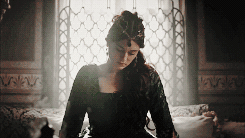
Queens
Queen of Pentacles: Hekate, Gaia, Eostre, Aine, Artemis, Ceres, Demeter
Queen of Cups: Aphrodite, Venus, Hera
Queen of Swords: The Morrigan, Freya, Athena, Themis
Queen of Wands: Brigid, Hestia, Bellona, Aine

Knights
Knight of Pentacles: Athena, Athena, Macha, Persephone, Lugh, Artemis, Demeter, Ceres
Knight of Cups: Aphrodite, Boann, Isis, Hathor
Knight of Swords: Badb, The Morrigan, Athena, Hermes, Nemain
Knight of Wands: Apollo, Brigid, Bellona, Lugh

Pages
Page of Pentacles: Athena, Apollo, Lugh, Pan, The Muses, Hathor
Page of Cups: Aphrodite, Lada
Page of Swords: The Morrigan, Freya, Odin, Athena, Nike, Bellona
Page of Wands: Artemis, Apollo, Brigid, Athena
5K notes
·
View notes
Text
as much as the concept of Jesus being a fairly normal lad has its charms, im personally very intrigued by the idea of him being just… extremely weird. not even in a mystical sense, just…….staggeringly BIZZARRE.
you go to the well to get some water, and here’s Miriam’s boy, staring at the sky, completely still. his expression is unreadable. you hazard a hello and ask how he’s doing, and he slowly, unblinkingly, lowers his gaze on you (he’s 8 and is missing his frontal teeth, not that this is making you any less uncomfortable) and says “I cannot speak of the state of my being, Nathan son of Saul, my brother, but rejoice for the water you shall take today will be as pure as the soul of the children of Heaven”
…you start sweating
384K notes
·
View notes
Text
Fantasy Guide to Royal Households and How they Work

When I say Households, I mean the entourage that follows around the royal family. The household went everywhere with them to care for their needs from the people who would empty their chamber pots to their noble companions. Most royal households are basically the same as noble ones, only on grander scale. Every royal had a household and an entourage as well as every noble at court.
Palace Personnel ~ The Commons
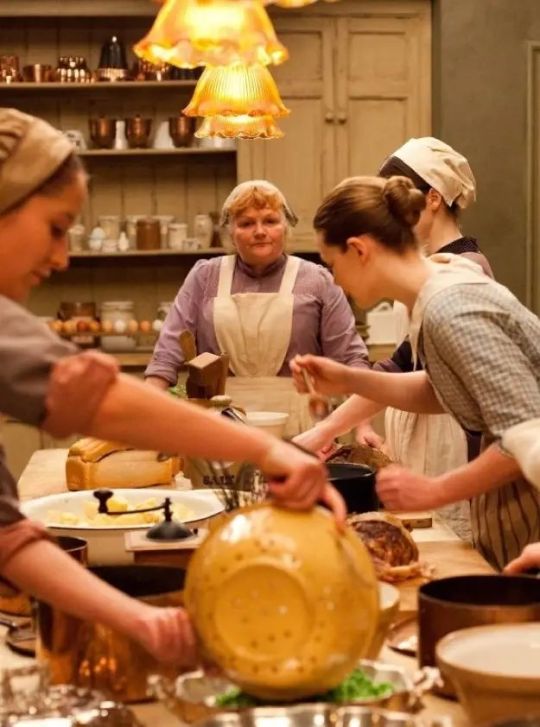
The commons were an intregal part of every household. They made up perhaps 80% of the work force. Royal courts were often on the road and never spent more than a few months at every palace. The court was constantly moving. Some positions were not permanent, meaning certain servants did not travel with the court because they were employed at the palace only. They would be paid by the Monarch's paymaster.
Scullion: The scullion was a relatively easy position to fill so they were often changed as the court went from palace to palace. They would be responsible for scrubbing and cleaning the servants quarters and the kitchens. They would scrub floors with lye, scour pots with sand, sweep put the fireplace and clean up after the other servants. They were the first to rise in a castle and tasked to light all the fires in the kitchens. Scullions would just be employed to the palace and serve a multitude of chambers
Laundress: The laundress was responsible for the cleaning of anything made of fabric in the household. Since they are handling unmentionables, they knew what happened behind closed bedchamber doors. They knew when the King visited the Queen or hadn't, they knew when marriages were consummated or not and they knew when the Queen and royal women were not pregnant. They often sold secrets to pad their pockets. Laundresses might be permanent staff but sometimes not.
Minstrels: The minstrel was a commoner hired to play an instrument or sing for the entertainment of the royal. A royal might staff a few at a time but they would always have one on hand. The minstrel would likely come with their masters as they travelled. The minstrel might serve the main royal household but a royal might retain their own.
Cook: The cook was one of the most important servants in the household. They would have the task of overseeing the running of the kitchens and keeping supplies in order. They would likely be on call at all times. Henry VIII's cook was often woken in the night because his royal master wanted a midnight snack. The cook was a valued member of the household and would have been highly sought after if they were a very skilled cook. They would have travelled with the joint. Cooks were apart of the greater royal household but often royals retained private cooks for their own use.
Maidservant: The maidservant cleans the castle. She would sweep the floors, scrub them, empty the chamberpots, get rid of the ashes from the fire and ready the fire for later. She would make up the bed or strip it for the laundresses. She would wash anything that needed washing including furniture and ornaments. She was likely not a travelling servant and would be strictly employed at a single palace.
Jester: The jester was the hired entertainer. Working under the master of revels, the jester had the daunting task of making the monarch and their family laugh. They would tell jokes, tell stories, cause havoc in the court for laughs and lighten the mood. The most successful jester of all time was Will Somers, jester to Henry VIII. Will broke bad news to the infamously bad tempered monarch and got away with things that would have sent others to the block. Will survived most of Henry's reign, his head intact. Jesters would be apart of the main household though each royal might have one of their own.
Positions within the Royal Household ~ Noble

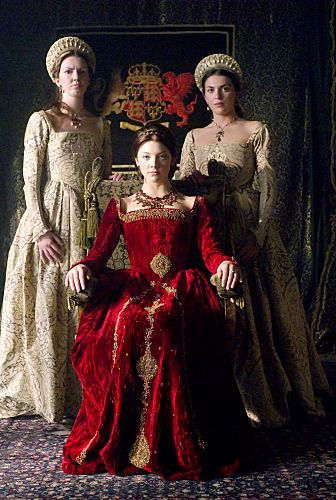
Nobility were always welcomed at court. They eat at court, slept at court and were cared for by the monarch. Some nobles had to sing for their supper and most were hired as royal servants. They weren't exactly scrubbing floors and would be paid handsomely with land that would generate wealth for them
The Steward/Seneschal: This person was the head of the royal's staff. They would have the task of running the lands and servants their master or mistress. The steward served as a backup and assistant in all the tasks even representing their master or mistress when they were unavailable. Would be a high ranking noble. Each royal household would have them.
Treasurer of the Household: The treasurer was the accountant and pay master. They would be in charge of ensuring debts were settled, wages were paid and the household was running within the budget. This was a coveted position because it gave the treasurer insight into the financial situations of the royals. Such info was wroth its weight in gold. Each royal would have one.
Usher: The Gentleman Usher would be in charge of escorting guests into the royal chambers and into the royal presence. They would act as a go between their royal master/mistress and the guest often going back and forth with messages. It was just as coveted as the position of chamberlain but with less responsibilities.
Master of Horse: The Master of Horse was in charge of seeing to the horses of their master. They would oversee the grooms or the stableboy/hands who were employed at the stables to actually care for the horses. The master of horse would ensure that the stables were in order and the horses were up to parr in order to bear royalty across the kingdom. Each royal would have one but there would a main one who acted as overseer.
Master of the Wardrobe/Mistress of the Robes: These are the nobility who are employed to look after the clothes of the royal they serve. This would mainly involve a managerial position, overseeing the inventory of the royal wardrobe (a warehouse like building that housed the clothing) and placing orders for new clothes. It was a tidy job that rarely involved getting the hands dirty. Each royal would have one.
Chamberlain/Valet: The chamberlain is employed to look after the Lord's bedchamber. This was the most sought out position as they effectively were the gateway into the royal presence. Their main task was making sure their boss was comfortable and happy. Could be a well born commoner or a noble. Each royal would have one.
The Page: All royal households had pages. They would be a young noble boy about seven years old sent to their royal master. He would be in charge of tidying up after the lord, carrying messages to other servants and occupants of the castle and serving him at meals. Unlike others on the list, the page would not be paid. His experience was his payment as he would learn the running of a court and how to be courtier. Each royal would have one.
Squires: Squires were like pages though they only served the men. They would accompany their royal master to battle, look after his armour and mail, ensure that his lord's horse was saddled, caring for their master's weapons. The squire would always be a young nobleman on the cusp of becoming a knight.
Governess: The governess is a noblewoman woman employed to oversee the Monarch's children's household. She would be the first teacher a royal child would have and would oversee the nursemaids who would have care of the physical person of the child. She would be appointed when the child was four or five. Notable governesses include Katherine Swynford (wife of John of Gaunt and mother to the Beaufort line), Margaret Pole (wife of Tudor Loyal Sir Richard Pole, sister of the last York heir Edward of Warwick, daughter of George Duke of Clarence and niece to King Edward VI and Richard III), Kat Ashley, Margaret Bryan, Madame de Maintenon and Baroness Lehzen. Most unmarried Princesses retained their governesses while Princes generally outgrew their governesses after they were breeched.
Gentlemen of the Privy Chamber: They were the male companions of a King or Prince, sort of like ladies in waiting but manly. They would accompany the King or Prince everywhere they would go and shared duties with Groom of the Stool (royal toilet paper dispenser) and the Chief Gentleman of the Chamber (overseeing the staff and maintaining the chamber). They would help their master get ready, serve him at the table and organize hunting and games to keep him entertained. Gentlemen and companions where often chosen for their connections as well as their master's own opinion. Henry VIII's gentlemen included: Sir William Compton (ward of Henry VII and heir to rich lands), Sir Henry Norris (the grandson of William Norris who fought with Henry's father at Stroke and a relation to the Yorkists Lovells), Sir Anthony Denny (son of Sir Edmund Denny Baron of the Exchequer) Sir Michael Stanhope (brother in law to Edward Seymour, Duke of Somerset), Charles Brandon (ward of Henry VII and son of Tudor Loyalists)
Ladies in Waiting and Maids in Waiting or Maids of Honour: These are the female attendants to the Queen or Princess. Ladies in Waiting were married while the Maids were unmarried. They would have to attend their mistress wherever she went, help her get ready, keep her chambers in order, write letters for the Queen and maintaining her honour. They were chosen for their connections. Using Katherine of Aragon as an example, her Ladies in Waiting included: Maria de Salinas (daughter of Juan Sancriz de Salinas secretary to Isabella, Princess of Portugal and a Spanish courtier in the service to Katherine's parents, wife of Baron Willoughby de Ersby), Elizabeth Howard (the daughter of Thomas Howard, 2nd Duke of Norfolk, sister to Thomas Howard, 3rd Duke of Norfolk and wife to Thomas Boleyn, ambassador to France), Anne Hastings (daughter of William Hastings, 1st Baron Hastings, wife to George Talbot, Earl of Shrewsbury and Lord Steward.), Agnes Tilney (wife to Thomas Howard, Earl of and 2nd Duke of Norfolk.), Elizabeth Scrope (wife of John de Vere, Earl of Oxford, a loyal Tudor lord), Margaret Scrope (wife of Sir Edmund de la Pole, Earl of Suffolk cousin to the King), Anne Stafford (sister of the Duke of Buckingham, married Sir George Hastings, Earl of Huntington and daughter of Henry Stafford, 2nd Duke of Buckingham (cousin to the King) and Lady Katherine Woodville (sister of King Henry VIII's grandmother and his great aunt by her marriage), Elizabeth Stafford (sister to Anne Stafford wife Robert Radcliffe, Lord Fitzwalter and Earl of Sussex around). Their connections are what got them their places and you can see why they were chosen.
Accommodation

Accommodation can be a difficult thing to sort both as a writer and a steward. You might have a palace of 200+ bedchambers in which you must house a staff of 500-/+, a varying amount of nobles, the royal family (of a varying amount) and their own households. When assigning rooms it is best to think of a Russian nesting doll. Start from the inside and work your way to the outside.
The best rooms go to the monarch, their consort and their children/siblings/parent(s). These chambers would include the bedroom, a drawing room/ common area, a privy, a closet (a small chamber that can be used for prayer or work). They would be furnished with the best cloth, the best candles and whatever furniture brought by the resident since most royal courts travelled from palace to palace. They will also have chambers for their personal servants such as ladies in waiting and grooms.
The second best set of rooms would go to the highest ranking nobles/people in the court. These rooms would be less fancy and a little smaller. These would be given to from titled nobility descending from those of Ducal rank (Dukes/Duchesses) or even members of the council such as Thomas Cromwell in Tudor times.
The next set would be considerably smaller, perhaps minus a closet or a drawing room. Given to lower nobility.
The next level of chambers would be smaller perhaps only the bedroom and a common area given to minor nobles.
The last set of rooms would be small and only hold enough room for a bedroom. Servants would have to sleep on the ground on pallets beside their masters.
Any other guests at court would have to stay at off-site locations around the palace in the city. Some nobles at houses around major palaces just in case they arrived late or were kicked out of court.
18K notes
·
View notes


